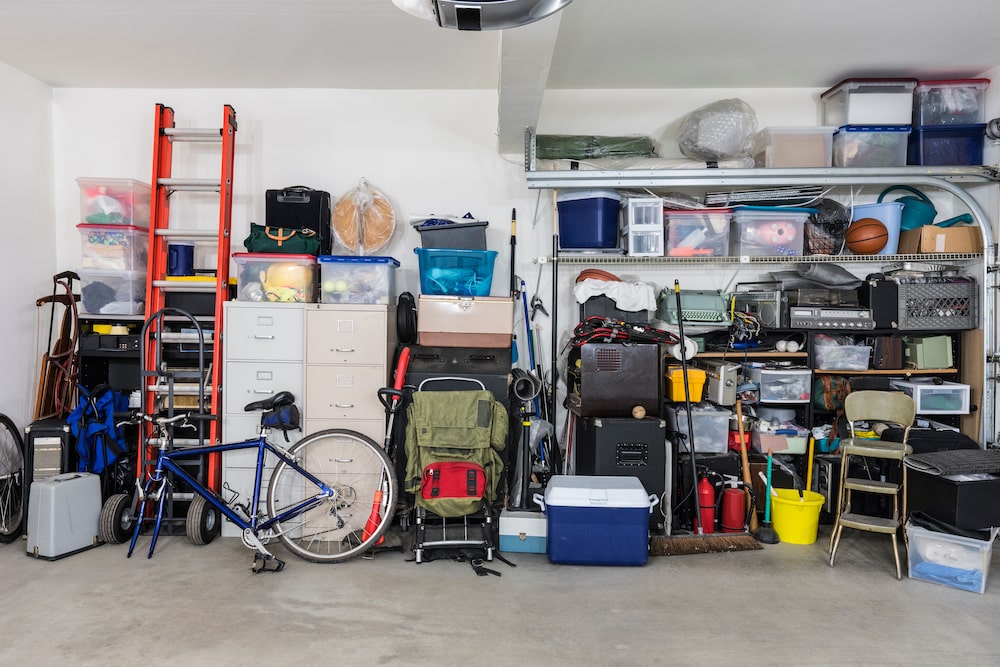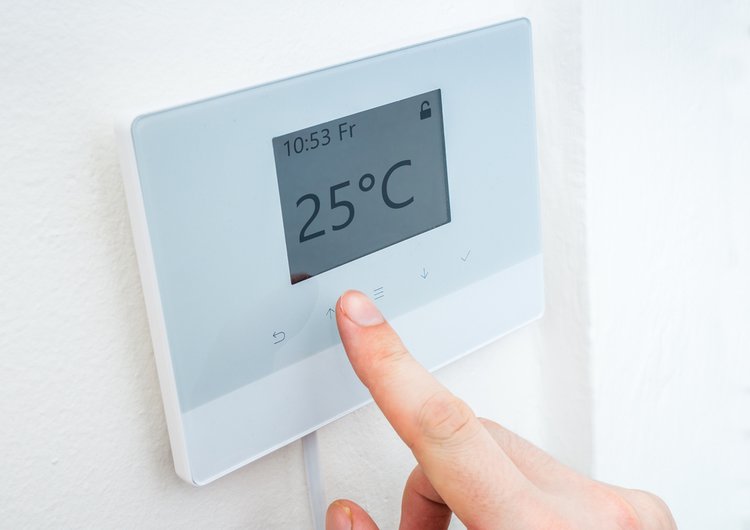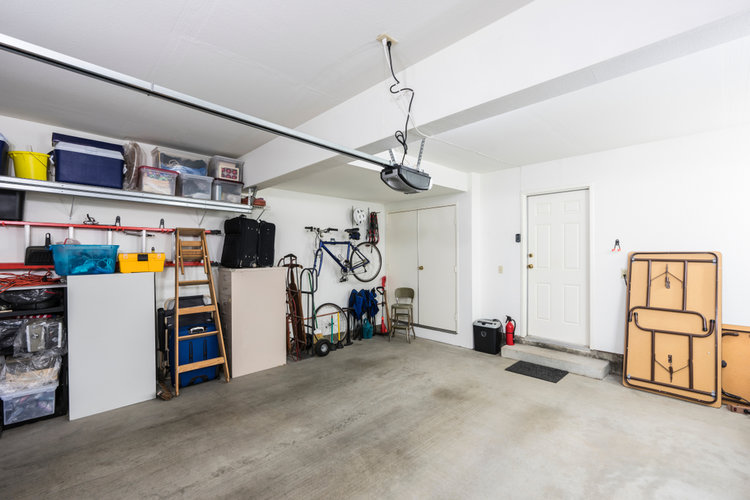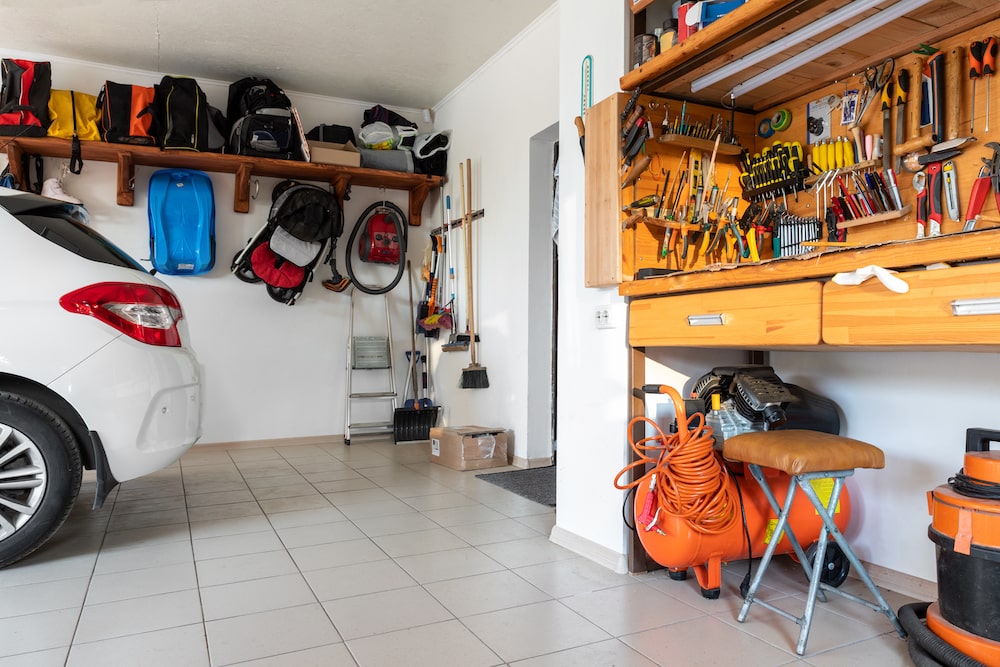Can Leaving Your TV in a Cold Garage Break It?

What To Know
- TVs can sustain damage from being too cold, with issues ranging from internal hardware shifts to condensation formation, potentially leading to costly repairs or replacement.
- It’s not advisable to store a TV in a cold garage; instead, maintain indoor temperatures above 40 degrees Fahrenheit and consider heat insulation to protect the device.
- If a TV has been in the cold, wait several hours at room temperature before turning it on to prevent damage from potential internal moisture.
You’ve left your TV in your unheated garage this winter, and temperatures reached below zero. When you finally return, you’re about to turn on the TV, but something stops you.
Is it a good idea to turn on a TV left in the extremely cold garage?
You notice something isn’t right with the TV screen. Is the cold to blame?
Can a TV break from being too cold? What happens if a TV gets too cold?
Keep reading to find out!
Quick Navigation
Can a TV Break From Being Too Cold?
Yes, a TV can break from being too cold.
A TV’s internal hardware is a delicate ecosystem that extreme temperatures can certainly disrupt.
While different types of TVs have varying levels of sensitivity to cold, they will all be damaged by prolonged exposure to very cold weather.
If you live in a place with cold, icy winters, it’s best to store your TV inside your heated home rather than leave it in your humid, below-freezing garage or basement.

What Happens If a TV Gets Too Cold?
Several things could happen when a TV gets too cold.
There are a few different ways that extreme cold could damage your TV.
Your TV’s Metal Components Could Shift

You may already know from middle school physics that materials expand in the heat and contract in the cold. The same philosophy applies to your TV’s internal hardware.
Your TV is made up of delicate and complex logic boards, wires, and other carefully placed metal parts. When frozen, these metal pieces will contract and pull away from each other, which could lead to wires detaching and breaking.
If your TV is not turning on or is not responding to its remote control, it could be because a few of its inner components have broken.
You will most likely need to take your TV to a TV repair technician or replace it altogether.
Condensation Could Form
Winter often brings humid weather, such as blizzards, rain, and other forms of precipitation.
Without the warmth to evaporate all of this moisture, condensation could form inside your TV.
This could completely break your TV and pose a fire hazard when you try to turn it on. If your TV has condensation inside, you may notice water inside the screen.
Water damage creates bright spots on the screen or flashing vertical lines. Your TV’s built-in speakers may have also stopped working.
Fixing water damage on a TV is a complicated process that yields low success rates and often requires you to completely take apart your TV. This is risky if you’re unfamiliar with a TV’s anatomy, and you could struggle to put it back together correctly.
Watch the video below to see an example of water damage on an LED TV and the complicated procedure involved in fixing it.
Your TV’s Screen Could Lag
Your TV may be working a little slower than usual and take several seconds to respond to your remote’s commands.
The image could also be lagging or ghosting.
This could make tasks like changing the channel or volume quite frustrating and may make it almost impossible to game as the input lag would be too slow.
What Temperature Will Damage a TV?

TVs should be kept at temperatures higher than 40 degrees Fahrenheit.
Any weather under 40 degrees Fahrenheit (5 degrees Celcius) will damage your TV.
Every TV brand has its own recommended temperatures to operate in, so consult your user manual for guidelines specific to your unit.
3 Ways to Keep Your TV Warm
In addition to understanding the potential risks of cold temperatures on your TV, there are proactive measures you can take to ensure its warmth and optimal performance.
By implementing these three strategies below, you can safeguard your TV from the damaging effects of extreme temperatures.
Let’s explore these practical solutions in more detail.
Maintain Room Temperature Above 40 Degrees Fahrenheit (5 Degrees Celsius)
To ensure your TV stays warm, it’s essential to keep the room temperature above the recommended threshold of 40 degrees Fahrenheit.
Installing an air-conditioner or using a fireplace can effectively maintain a cozy environment not only for yourself but also for your TV.
Run a Space Heater Near Your TV (When Not in Use)
When your TV is not in operation, placing a space heater near it can help maintain its warmth.
However, exercise caution and only use the heater when the TV is not in use.
Remember that when your TV is functioning, it generates heat on its own and does not require an additional heat source.
When positioning the space heater, be mindful of maintaining the right distance to prevent the TV from overheating while ensuring it remains within the permissible temperature range.
Install a Heat Insulation Layer in Your Room or House
Consider using a product like SmartSHIELD , a recommended heat insulation material, to create a barrier that traps warmth inside your home and prevents cold air from entering.
This insulation feature not only keeps your TV warm during winter but also shields it from overheating during scorching summer days.
By installing a heat insulation layer, you not only protect your TV from chilly temperatures but also create a comfortable environment that shields it from extreme heat, offering year-round benefits.
Can You Leave a TV in a Cold Garage?

It’s not recommended to leave your TV in a cold garage.
If you live in a very cold area of the world, it’s best to avoid leaving your TV in your garage over the winter.
Garages are often very cold and humid. Leaving your TV there during the cold months could cause irreversible damage.
Note that although your garage may feel warm during the day, it often becomes quite cold at night, which could damage your unit.
If you’re thinking of mounting your TV in your garage, it’s best to monitor the temperature and humidity levels to make sure it’s a safe environment for your TV.
This Haozee Smart WiFi Temperature and Humidity Monitor connects to an app on your phone, so you can monitor how cold and humid your garage gets at night without having to get out of bed and check it yourself.
How Long Should I Wait To Turn On a Cold TV?
Wait a few hours before turning on a cold TV.
If your TV has been exposed to extreme temperatures, do not turn it on immediately while it’s still frosty.
There could be moisture inside your unit, which, when mixed with electricity, is a recipe for disaster.

Instead, bring your TV inside your home and let it come back down to room temperature. This will give the metal components time to expand back to their original size. It will also allow any condensation to evaporate.
Ideally, you should let your TV rest for a few hours, but it’s better to leave it out overnight.
Do not place the TV next to a heater or fireplace in an attempt to quicken this process. You will only do more damage.
Once it’s back to room temperature, turn it on and observe if it’s working normally.
Wrapping Things Up
This winter, don’t give your TV the cold shoulder.
You don’t want to sit in 40-degree Fahrenheit weather for weeks on end, so why subject your TV to the same torture?
Extremely cold temperatures could severely damage your TV, leading to hundreds of dollars worth of repairs. In the worst-case scenario, you may even have to purchase a replacement.
Keep your TV inside the house, where the cold weather won’t destroy its internal hardware.
If the temperature in your house has the potential to drop below the recommended threshold, it’s crucial to follow the three methods we’ve outlined in the article, which are maintaining room temperature, utilizing a space heater, and installing a heat insulation layer, to keep your TV warm and protected.
In case your TV is left in the cold, remember to let it rest at room temperature for at least a couple of hours.
What’s your experience storing TVs in cold weather? Let us know in the comments below!
Yesenia Achlim is a technical copywriter and editor with a focus on AV equipment. She aims to break down complicated topics and make technology accessible, no matter your technical expertise. When she’s not teaching you how to replace a projector lamp, you can find her reading and baking.


During the winter the inside of my home is constantly 45 degrees or colder. I have not figured out a way to keep my tv warm.
I have two brand new 50″ tvs in a storage unit and it is -7°F outside at the moment. I am going to go get the TV’s, they have been in there about 12 hours. Hopefully they are not damaged. I will let you know when I get them out and check them.
This article was so informative, and I loved it. Thanks a lot for the amazing insights. Keep rocking…….